The expanding foam nozzle should be cleaned after every use. Failure to clean will only allow the foam to cure and clog the nozzle. We have researched the most effective cleaning techniques to ensure that the nozzle is ready for your next DIY project.
If you want to keep the nozzle working well, it is best to clean it after every use. Just follow these steps:
- Detach the nozzle
- Squeeze the nozzle
- Run a wire through the nozzle
- Soak the nozzle in acetone (optional)
Cleaning an expanding foam nozzle is not rocket science. However, it can seem like it, especially if you don't clean it right away and allow the expanding foam to harden. We’ll discuss the steps in detail, so read on!
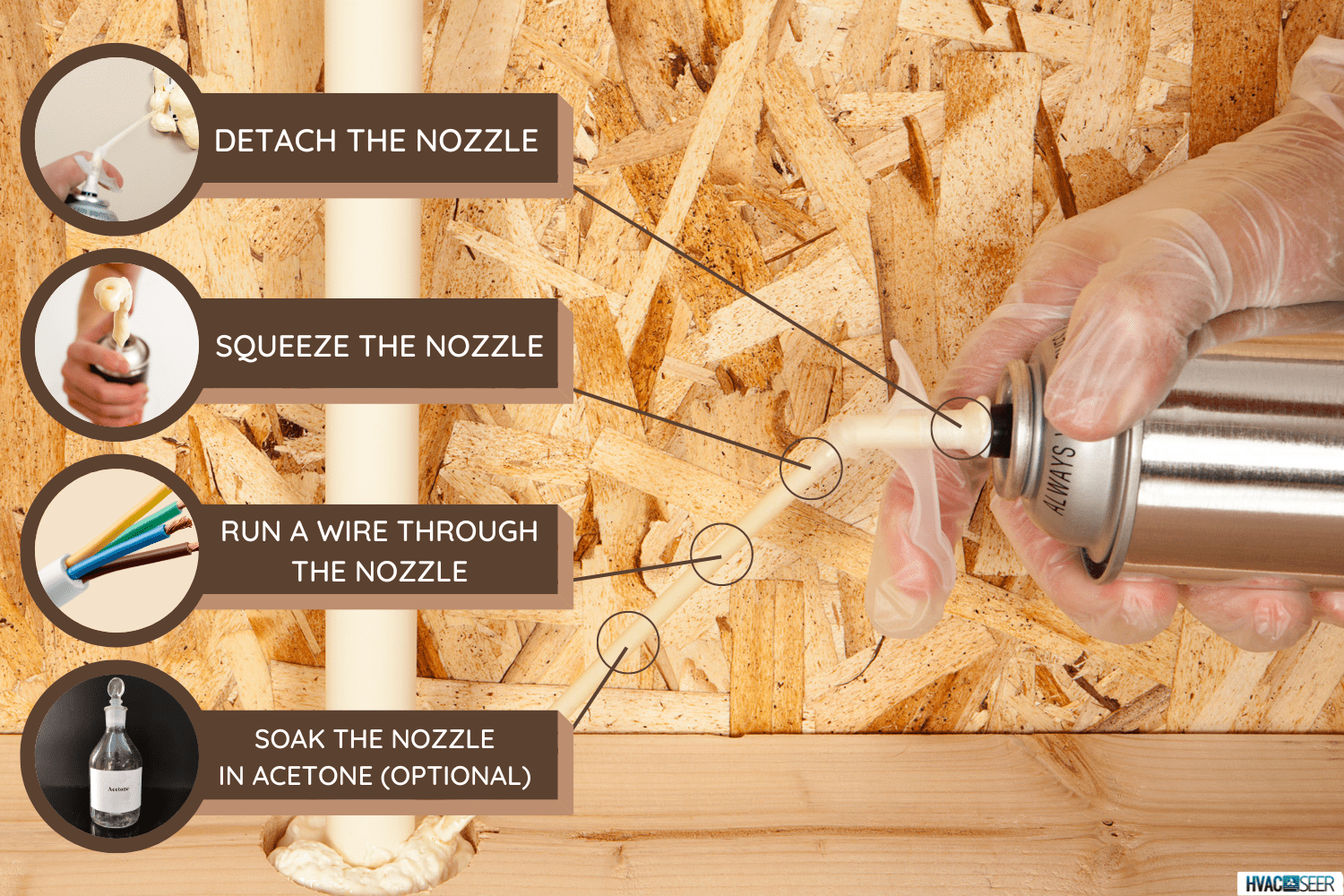
How To Clean An Expanding Foam Nozzle For Reuse
1. Detach The Nozzle
The nozzle can easily be detached by pulling it out of the foam can. If you've used WD-40 before, it works the same way as how a WD-40 tube nozzle is attached.
However, there are some types of expanding foam nozzles that are connected to some plastic parts so you can snap them firmly in place into the can. You may need to figure out how the parts fit together so you can put them back again after disassembling.
2. Squeeze The Nozzle
Squeeze the nozzle from one end to the opposite to remove excess foam. Slowly and firmly press the nozzle with your thumb and index finger and move your way until you reach the tip of the nozzle.
3. Run A Wire Through The Nozzle
If you feel that the foam residue is starting to lose its tackiness as you squeeze the nozzle, poke a 12-gauge wire through the nozzle like how you would use a drain snake to push foam residue towards the tip and out of the nozzle.
4. Soak Nozzle In Acetone
You can soak the nozzle in acetone for a few minutes if you want it squeaky clean and completely free from foam residue (optional). Keep in mind that acetone only dissolves uncured expanding foam, so you have to act fast!
Here's a video showing how to clean an expanding foam nozzle:
How Long For Expanding Foam To Dry?
The drying period of expanding foam is relatively short. It takes only about five minutes to one hour for it to be dry to touch. This doesn't mean, however, that you have to wait for one hour before cleaning the nozzle.
If you allow the foam to harden, it can be extremely difficult to remove it and you might damage the nozzle in the process.
Hardened expanding foam can only be dissolved by gasoline, and if you soak the nozzle in it, it could deform the nozzle. So do it right away while the foam is still soft and tacky.
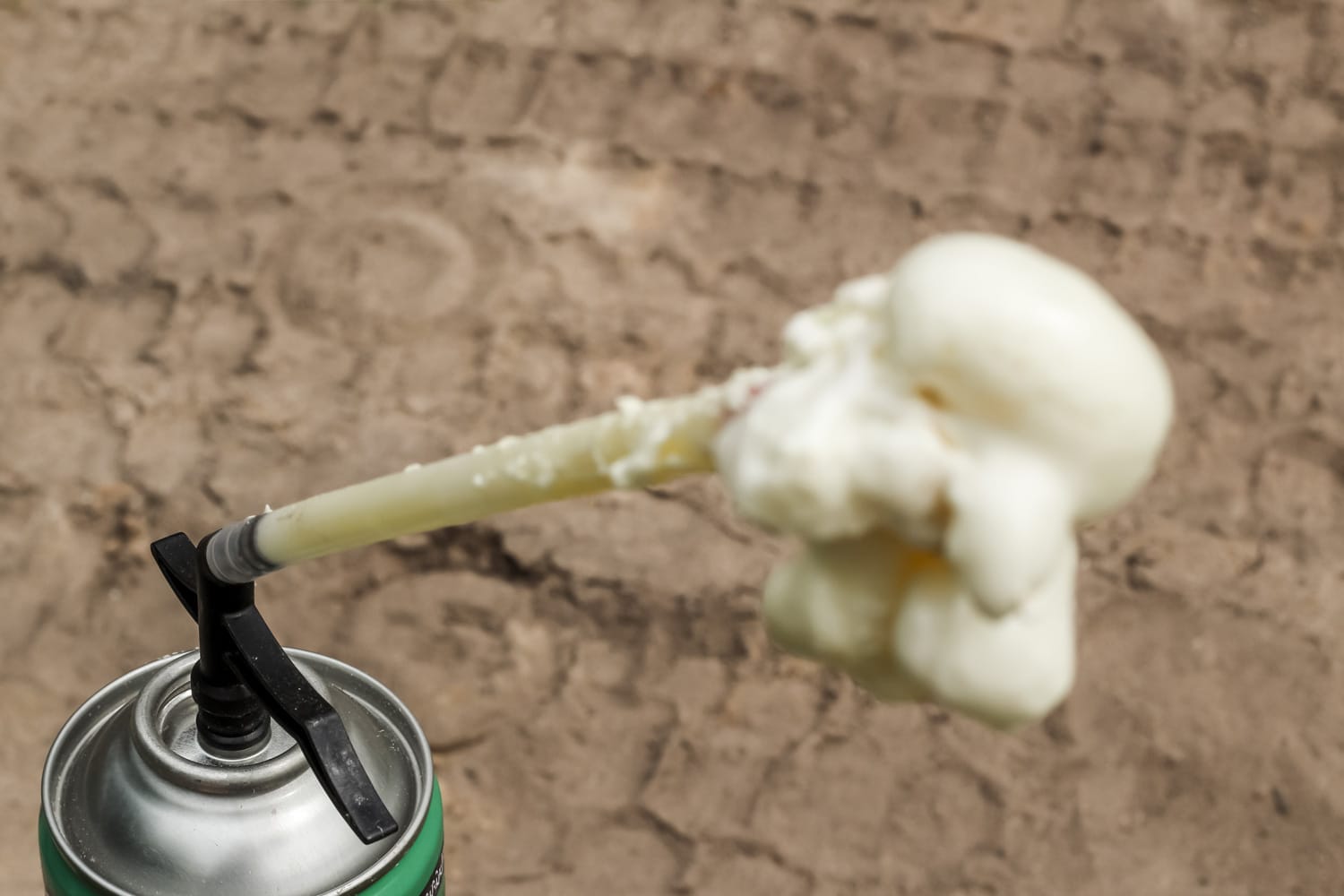
Is Expanding Foam Safe On The Skin?
When using expanding foam, you'll want to ensure that your skin isn't in direct contact with the expanding foam.
According to Bob Vila, if you don't wear safety gloves when cleaning expanding foam nozzles, you might experience rashes and redness on your skin. If you have sensitive skin, this could lead to an allergic reaction, which will cause even more discomfort.
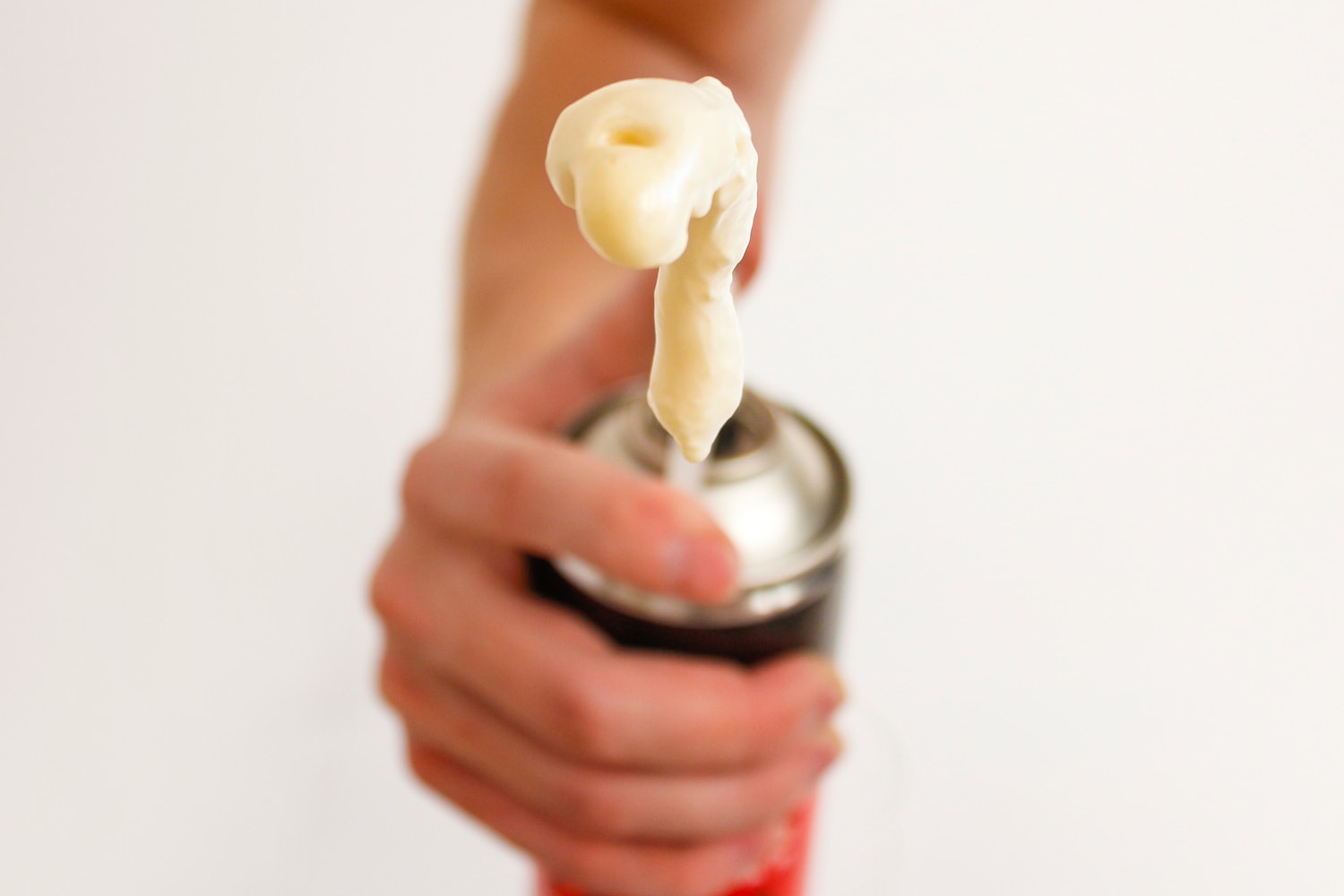
What To Do If Your Skin Gets In Contact With Expanding Foam?
When using expanding foam, it is essential to ensure that you follow all of the safety precautions, including wearing gloves when handling the product and making sure that you do not breathe in the chemical fumes by wearing a respiratory mask.
There is no need to fret when your skin comes in contact with expanding foam. It is not a death sentence. However, if it happens, you can follow the steps below to clean your skin from the gooey mess.
1. Grab Some Paper Towel
Grab a paper towel and wipe away expanding foam on your skin. Don't rush to the nearby faucet to wash your skin with water right away.
Running water from the faucet may wash away a huge chunk of the foam. However, most expanding foams are water-resistant, so you can expect some residue on your skin.
For this reason, allowing your hands to dry in the air with some foam residue sticking on your skin could cause even more trouble. This is because expanding foam expands when it comes in contact with moisture and air; if you wait long enough, it can harden your skin.
2. Get Some Acetone
Once you have wiped away most of the foam, dab some acetone on a soft, clean cloth and use it to wipe the remaining foam on your skin. This should ensure all foam residues are eliminated, as acetone is the expanding foam's worst nightmare next to gasoline.
Check out this acetone on Amazon.
3. Wash Hands With Soap And Water
Once the expanding foam has been dissolved by the acetone, you can now wash your hands with soap and water. The irony is, you may not have any expanding foam on your skin, but now you have acetone. If you have sensitive skin, then acetone can be an irritant.
Take time to wash your skin for at least 15 minutes. This should be enough to free your skin from acetone residue.
Is There Any Way You Can Make Expanding Foam Dry Faster?
If you want to speed up the process of making your DIY expanding spray foam insulation, you can spray a mist of water to the surface to increase the drying rate. Adjust your water spray bottle to the highest setting to ensure you have the finest mist.
Are Expanding Foam Nozzles Reusable?
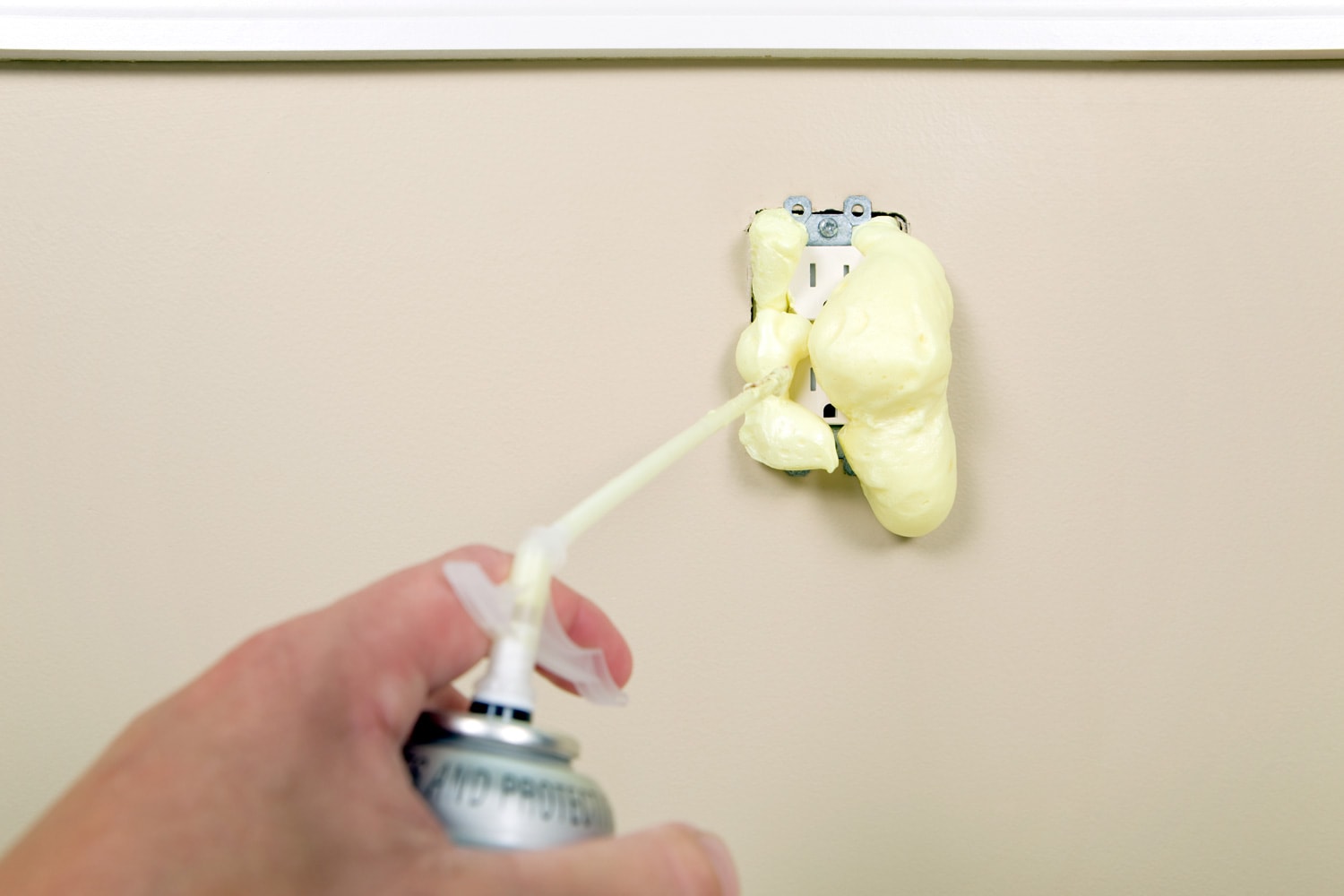
If you're planning to use the same expanding foam nozzle for different projects, you might be wondering if you can reuse it. It may be common sense to think that it won't last forever, but there has to be a way to extend its life and maximize its utility. And that way is to keep the nozzle clean after every use.
Check out these reusable expanding foam nozzles on Amazon.
Alternative Solvent To Use To Break Down Expanding Foam
Yes, WD40 can dissolve expanding foam but only when it's not yet cured. It's a great alternative if you don't have acetone around. WD40 will not penetrate foam that's already in its cured state. You may need gasoline for this task.
How Often Can You Reuse A Can Of Expanding Foam?
You can reuse a can of expanding foam as long as it hasn't exceeded its expiration date and the nozzles are kept clean after every use.
Can Expanding Foam Stop Ants?
There are many different ways to get rid of ants and other pests from your home. They usually come from the outside, so the best way to prevent them from invading your home is by sealing up their entrance points.
One effective way to prevent them from entering your home is to use expanding foam. Expanding foam is a great alternative to traditional pest control methods.
However, you need to make sure you're choosing the correct type of expanding foam for this particular situation.
Check out this pest block expanding foam on Amazon.
What Insect Feeds On Expanding Foam?
Many different kinds of pests can obstruct be found in your house, but mealworms are your worst enemies if your insulation is made up mostly of expanding foam. This is because mealworms feast on expanding foam, and it is a delicacy for them!
Is Expanding Foam Safe For Cats And Dogs?
Expanding foam is generally considered safe for pets when in its cured state, but if it gets in their mouths and they swallow it while it's still tacky, it can expand and cause indigestion and could damage your pet's digestive system.
The best thing to do is to avoid this altogether by not leaving the foam out or letting them play with it.
What Will Happen If You Ingest Expanding Foam By Accident?
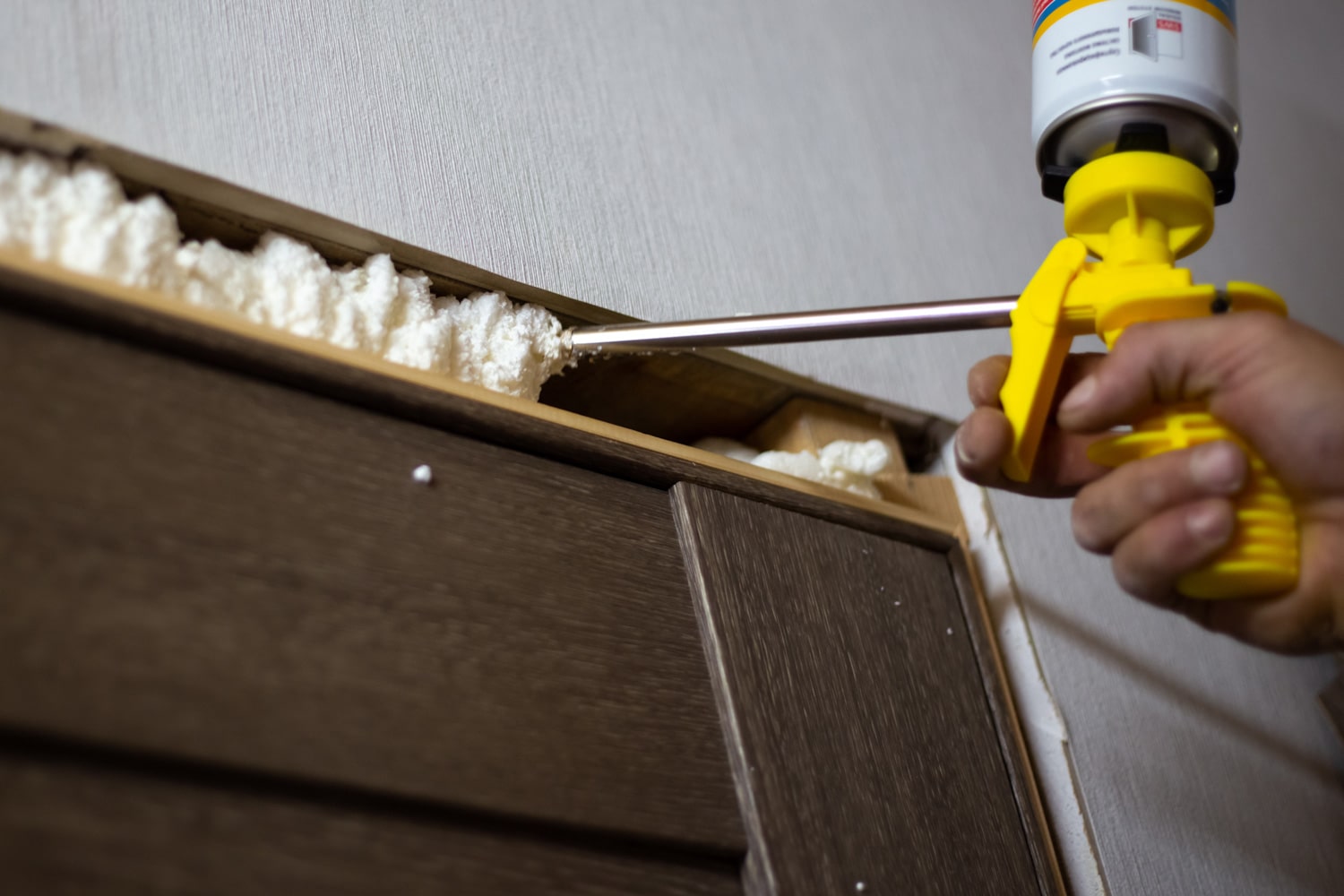
Have you ever accidentally swallowed something that was not meant to be ingested?
The expanding foam could obstruct in the stomach and, therefore, a trip to the emergency room. So, if you think that the foaming agent has expanded, wait until it has completely solidified, and you will have a ride of your life (and you know where to).
In addition, don't expect your body to know what it's supposed to do with the substance. Your body will get confused and you'll have a really hard time with it because that's beyond the gastric juice's job description.
Does Expanding Foam Show Up On X-Ray?
The biggest concern that people have, especially if one has accidentally swallowed expanding foam, is whether or not it shows up on an x-ray. It turns out that expanding foam is made out of materials that are virtually invisible on an x-ray.
Most of the time, the x-ray machine will show the bones and the rest of your body structure. However, when it comes to expanding foam, the doctor's diagnosis will be based mainly on what you tell him.
In Closing
You will want to clean your expanding foam nozzle immediately if you have used it. Cleaning the nozzle will allow it to continue to work properly. When cleaning the nozzle, you should poke through the inside and rinse it thoroughly with acetone.
You'll know you're done cleaning your expanding foam nozzle if you can see through it clearly without any foam residue. If your expanding foam nozzle has hardened into a difficult-to-clean mess, try gasoline.
You might also like:
Can Expanding Foam Be Eaten By Pests?




